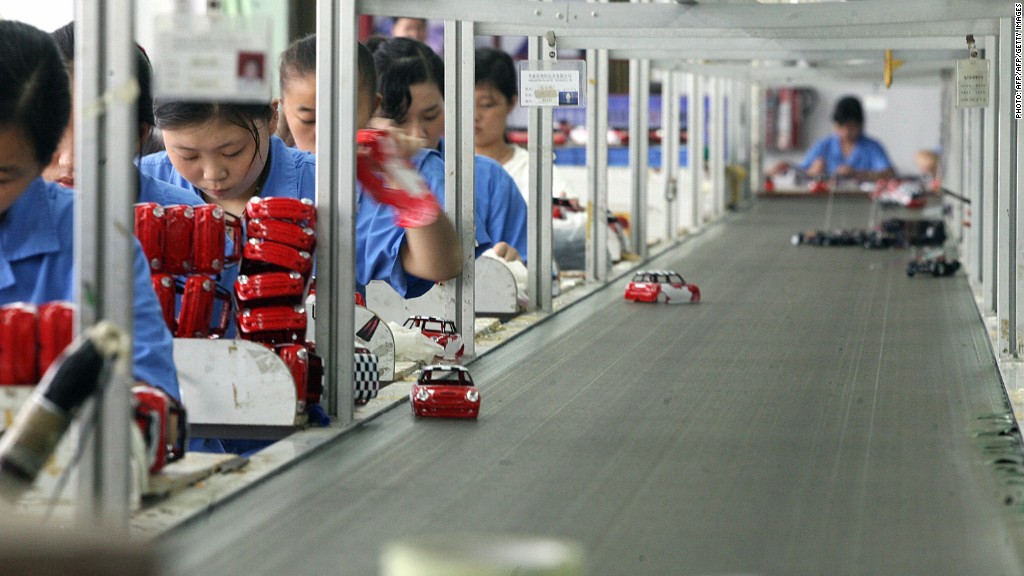
The pace of factory activity in China picked up in October for the first time in three months, according to data released Thursday by the National Bureau of Statistics.
China's official purchasing manager's index jumped to 50.2 in October from 49.8 the previous month, the government said. Any reading above 50 indicates that factory conditions are improving in the manufacturing sector.
Zhiwei Zhang, an economist at Nomura, said in a research note that the rise above 50 "confirms that economic momentum has indeed picked up."
Another measure of manufacturing activity released last week, HSBC's initial purchasing manager's index, also indicated improvement in the sector. At 49.1, the index suggested factory growth was slowing, but that activity was contracting at the slowest pace in months. The bank said Thursday its final full-month index hit 49.5, an eight-month high.
"We expect a continuation of policy easing to further boost domestic demand and counterbalance the external weakness, leading to a gradual growth recovery in the coming quarters," said Hongbin Qu, an HSBC economist.
The fate of manufacturing in China is considered a barometer of the global economy because of the country's role as a powerhouse exporter. And because it makes up a large part of China's economy, manufacturing strength plays an important role shaping domestic policy.

China's National Bureau of Statistics said last month that GDP slowed to 7.4% in the third quarter.
China's economy has grown at an average of around 10% a year for the past three decades, allowing the country to rocket past international competition to become the world's second largest economy.
While GDP growth was slower last quarter than many economists expected, recent data on manufacturing and exports suggest growth is beginning to rebound.
The improvement comes at a crucial juncture for Beijing.
Related: Is China a friend or foe?
China's once-in-a-decade leadership transition is scheduled to start Nov. 8. The timing of the event, which will reshape the ranks of China's Communist Party, could complicated an policy changes in the near term.
The government has already made relatively modest efforts to encourage growth this year. The People's Bank of China twice lowered interest rates, and the central bank has also cut the amount of money banks are required to hold in reserves.
Policymakers confirmed more action in September, finalizing the details on a $157.7 billion investment in 55 new infrastructure products.


